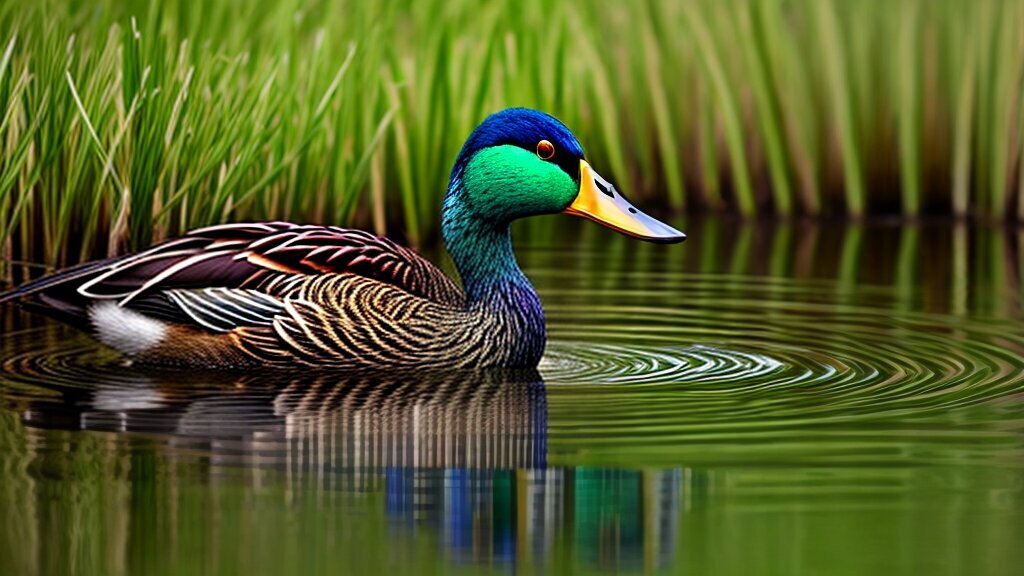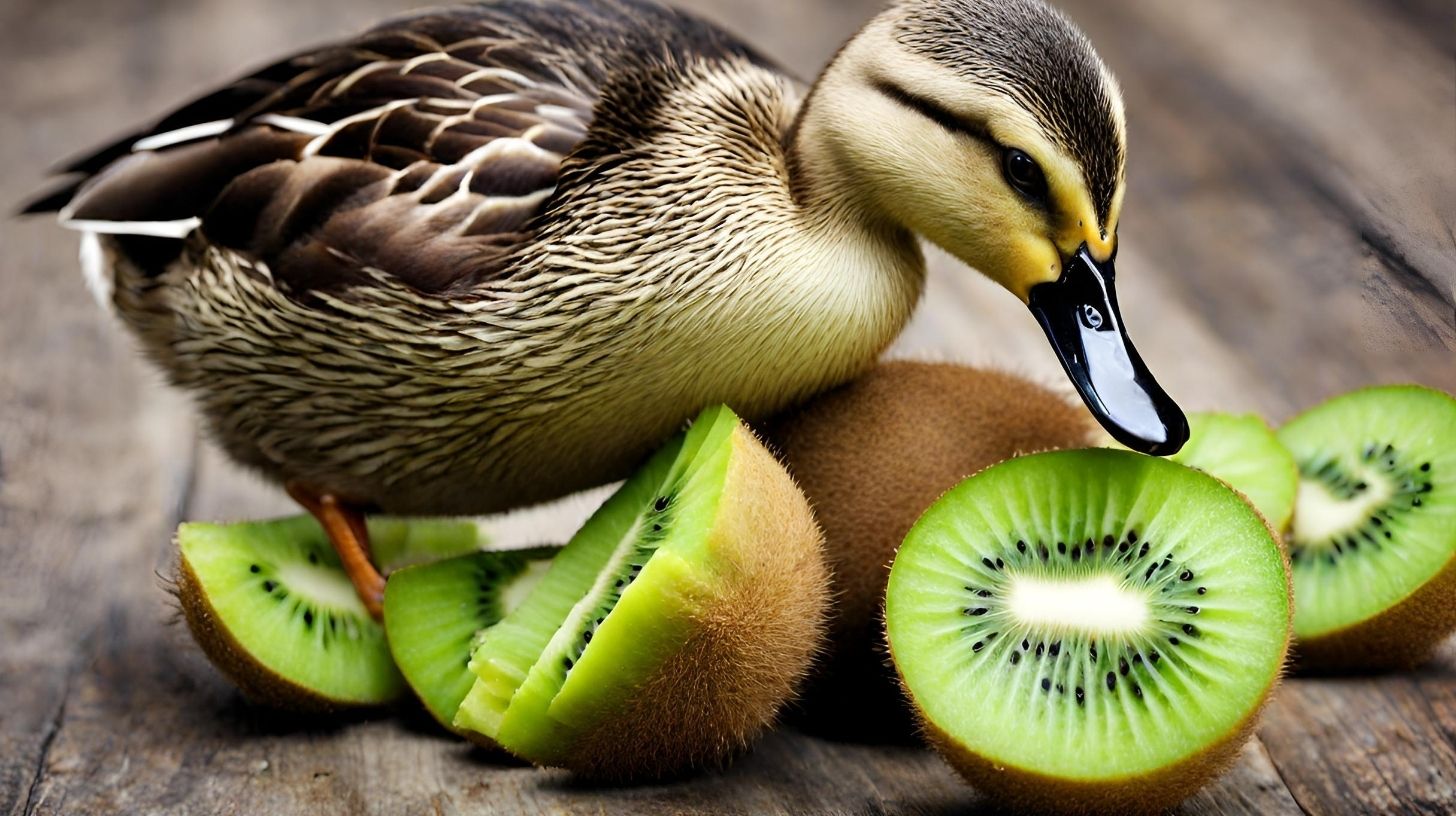Do Ducks Eat Cattails?

Table of content:
Ducks frequently seen foraging and nesting in these same marshy areas where cattails grow in abundance. This raises an interesting question – do ducks eat cattails? The answer is yes, many duck species find the various parts of the cattail plant to be a tasty treat and important source of nutrients.
Why Do Ducks Eat Cattails?
Ducks flock to wetland areas for many of the same reasons cattails thrive there – the shallow water and muddy soils are perfect habitats to forage and nest.
Duck species like mallards and black ducks dig for these rhizomes with their bills. They bite off pieces of the tender white rhizomes and eat them for the carbohydrates that provide critical energy.
In spring, ducks look for newly sprouting cattail shoots and leaves. The young, green growth contains proteins important for egg-laying females after the nutrient-deprived winter months. Pintails, wigeons, teal, and other dabbling duck species snip off these growing shoots.
Later in spring and summer, ducks feast on the best part of the cattails – the developing flower spikes. The cylindrical spikes contain simple sugars like glucose that offer ducks rapid energy. Ducks eat the spikes when the flowers first emerge and continue until the fluffy seed heads form in mid to late summer.
Finally, ducks like teal will forage on cattail flowers that have gone to seed. They use their lightweight bills to pick the tiny seeds off the fluffy white seed heads. These small seeds provide protein and fat.
What Duck Species Eat Cattails?
Many duck species are known to eat various parts of the cattail plants. Here are some of the most common ducks that forage and feed on cattails:
Dabbling Ducks
- Mallards – The most widespread duck feeds heavily on cattail rhizomes in winter and the flower spikes in summer.
- American wigeon – These ducks nibble on young shoots in spring and early summer.
- Northern pintail – Pintails rely on newly sprouting leaves and shoots.
- Green-winged teal – Teal consume tender shoots in spring and pick seeds from mature flower heads.
- Northern shoveler – Shovelers filter small invertebrates from shallow waters where cattails grow.
Diving Ducks
- Ring-necked duck – Ring-necks eat both shoots and flower spikes.
- Lesser scaup – Scaup feed on young shoots and tender submerged parts.
- Redheads – Redheads eat all parts of the cattail plant.
- Canvasbacks – Canvasbacks shred and eat rhizomes from the muddy bottom.
Other Duck Species
- Black duck – Black ducks are one of the most voracious consumers of cattail rhizomes.
- Wood duck – Wood ducks nibble on young shoots early in spring.
- Ruddy duck – Ruddies pick apart developing flower spikes to reach the nutritious base.
- Hooded merganser – Mergansers eat small fish among submerged cattail stands.
Clearly, a wide variety of duck species benefit from the accessibility and abundance of nutritious cattail plants in the wetlands and ponds where ducks live and feed.
When Do Ducks Eat Cattails?
Ducks rely on cattails the most during key periods of their life cycles. Here is an overview of what parts ducks eat and when:
Winter
In cold winter months when food is scarce, ducks depend on carbohydrate-rich cattail rhizomes for energy. Mallards, black ducks, gadwall, and other diving ducks dig underwater to bite off pieces of the starchy white rhizomes. Cattails provide a reliable winter food source when plants above ground die back or are covered in ice.
Early Spring
As sunlight returns and temperatures rise, cattails begin actively growing again. Ducks seek out the tender new green shoots that emerge from the rhizomes. Shoots offer protein and nutrients to build strength for breeding. Northern pintails, American wigeons, and green-winged teal all forage actively on these succulent early shoots.
Mid Spring
In mid spring, the cattail leaves reach their full height and the flower spikes begin to take shape. Ducks continue eating the leaf shoots while also switching focus to the pencil-sized flower spikes just emerging from the leaf bases. Mallards, blue-winged teal, gadwall, and ring-necked ducks all feast on these immature flower spikes for their high simple sugar content.
Summer
All spring and into summer, ducks eat the cattail flower spikes constantly as they rapidly grow and mature. The female ducks especially benefit from the glucose source as they build up fat reserves for egg production. Shovelers and ruddy ducks commonly forage among the cattails for the plentiful spikes.
Late Summer
By late summer, the flower spikes turn fluffy and white as the tiny seeds develop. Some ducks like cinnamon teal pick these seeds off the mature flower heads. But most ducks have switched to foraging seeds and aquatic insects as other food sources become more available later in summer. The cattails have completed their growing cycle and start to go dormant.
Fall
During the fall, ducks start to switch their foraging back to the cattail rhizomes and root mats in preparation for winter. The above-ground foliage dies back, but the underground food reserves remain. Ducks rely on these starchy reserves to help fatten up before migrating or hunkering down for the winter.
How Do Cattails Benefit Ducks?
Clearly, cattails form a nearly perfect food source for ducks. Here are some of the key benefits ducks derive from cattails:
- Abundant carbohydrates – The rhizomes contain a reliable source of energy-providing carbohydrates ducks need, even during the winter months.
- Essential proteins – New shoots provide proteins critical for breeding and nesting female ducks in spring.
- Vital fats – Developing flower spikes and seeds offer healthy fats ducks need for metabolism and migration.
- Rapid nutrients – Simple sugars in the spikes provide instant energy without lengthy digestion.
- Convenient access – Shallow wetland waters allow ducks to easily reach and forage on cattail stands.
- Shelter – Dense cattail stands offer protection from predators and nesting material.
Without the cattails ubiquitously growing in their wetland habitats, many duck species would be hard pressed to find such readily available nutrition.
Problems Cattails Cause for Ducks
The symbiotic relationship between ducks and cattails isn’t without issues. As cattails spread aggressively by seed and rhizome dispersal, they can crowd out the diversity of native wetland plants. This reduces the variety of forage options available to ducks.
In addition, overabundant cattail growth can turn diverse small wetlands into dense monocultures of nearly impenetrable cattail stands. This limits the open water habitat ducks need to feed, nest, mate, and rear young. While ducks do eat cattails, too many cattails can negatively impact duck populations.
Wetland management sometimes includes removing and thinning some cattails to promote regrowth of other wetland plants. In moderation, cattails benefit ducks greatly. But uncontrolled spread of cattails ultimately reduces the quality of wetland ecosystems. Maintaining diverse native wetland habitats with prudent cattail management provides the ideal environment for both cattails and ducks.
Conclusion
Cattails are an ever-present feature of the wetland and marsh environments ducks rely on. Ducks have evolved to take advantage of the carbohydrate-rich rhizomes, protein-packed shoots, sugary flower spikes, and oil-bearing seeds that cattails abundantly produce. A wide variety of duck species are sustained by selectively foraging on the different cattail structures as they develop through their growth stages.
So the next time you see a duck nibbling away in shallow water amidst brown, fluffy cattail flower spikes, remember – that duck is feasting on one of its favorite foods!
Welcome. I’m Adreena Shanum, the proud owner of this website, and I am incredibly passionate about animals, especially poultry. I founded adreenapets.com as a labor of love, stemming from my desire to share my knowledge and experiences with poultry enthusiasts worldwide.




